On today’s podcast we’re discussing mold-related skin conditions. My guest is Ann Shippy, MD.
After a decade of working as an IBM engineer, Dr. Ann Shippy became discouraged that traditional medicine couldn’t find answers to her own health issues, so she did her own research that led her to leave engineering to attend University of Texas Medical School. Dr. Shippy is a dynamic leader in the area of Functional Medicine, meaning she uses science and personalized attention to treat the whole person and looking for root causes and not just bandaging symptoms. Her interests and areas of expertise include autoimmunity, neurology, and environmental factors such as mold toxicity. Dr. Shippy is the author of two books, Shippy Paleo Essentials and the Mold Toxicity Workbook. She’s been serving patients for over 15 years in her thriving practice based in Austin, Texas.
In the interview today, Dr. Shippy shares symptoms to look for with mold exposure, the most common skin conditions linked to mold toxicity, why the skin is involved, and what to do to eliminate symptoms and restore your health.
So please enjoy this interview.
To learn more about Dr. Ann Shippy, visit:
https://www.AnnShippyMD.com
@AnnShippyMD on Social Media
For Dr. Shippy’s free “Could It Be Mold?” fact sheet, go to:
https://www.AnnShippyMD.com/mold
Transcript of Mold-Related Skin Conditions with Dr. Ann Shippy Episode
Dr. Cates: Hi there. I’m Dr Trevor Cates. Welcome to the Spa Doctor podcast. On today’s podcast we’re discussing mold-related skin conditions. My guest is Dr Ann Shippy and after a decade of working as an IBM engineer, Dr. Ann Shippy became discouraged that traditional medicine, it couldn’t find answers for her own health issues, so she did her own research that led her to leave engineering to attend the University of Texas medical school. Dr Shippy is a dynamic leader in the area of functional medicine, meaning she uses science and personalized attention to treat the whole person rather than just covering up with a bandaid approach. Her interests and areas of expertise include auto-immunity, neurology, and environmental factors such as mold toxicity. Dr. Shippy is the author of two books, Shippy Paleo essentials, and the Mold Toxicity Workbook. She’s been serving patients for over 15 years and her thriving practice based out of Austin, Texas. In this interview today, Dr Shippy shares symptoms to look for with mold exposure, the most common skin conditions linked to mold toxicity, why the skin is involved and what to do to eliminate your symptoms and restore your health. So please enjoy this interview. Ann, It’s so great to have you on my podcast. Welcome.
Dr. Shippy: So happy to be here. It’s great to see you.
Dr. Cates: It’s good to see you too. And so I know you, when we were talking recently, we were talking a lot about what you’re noticing, a lot of skin issues in your practice associated with mold exposure. So I thought it was really interesting with all the experience that you have and I thought it’d be good to have you on the podcast to talk about this because we’ve talked about mold exposure on the podcast a bit, but of course we want for people who didn’t watch the previous episodes on mold. Then let’s talk about where does mold exposure come from? We also want to be talking about the connection to the skin, so let’s start with how people are exposed to mold. For the people that didn’t even know this is something that’s a common issue.
Dr. Shippy: So mold is a hidden issue usually in a building, so about 50 percent of the time or more people don’t even realize that they’ve had a water leak. It might be just a little bit of water coming in around a window or an air conditioning system that’s leaked or a little leak behind the dishwasher or washing machine, that kind of thing, and then the other percentage of the time it’s they’ve had known leak, but they just didn’t get it fixed well enough. So the problem is it’s not the spores that most people are thinking about that cause the and allergy and that kind of thing. It’s actually the toxins that mold makes, so it’s just part of their living cycle that they make a very small environmental toxins that go into our air and then come right through our skin and into our and also into our lungs. And the problem is that a lot of times we’re just not equipped to zip those chemicals out of our body. So they start to build up and then the body’s like, oh my gosh, what do I do with this? And one of the things that happens is that it can really affect multiple conditions with the skin.
Dr. Cates: Yeah. So when you talk about how sometimes our bodies aren’t able to get those toxins out, are there some people more susceptible than others for this?
Dr. Shippy: Definitely. So anybody can get sick from all with big enough exposure, but some people are much more predisposed and it can. It can depend on multiple things and one is genetics. So if they have a genetic polymorphisms called snips that are in their detoxification pathways that involve getting rid of some of these toxins, they just don’t exit it from the body as well. So things like the people with enzymes in the liver, how well they make glutathion and then also methylation genes. And then another thing that can really make a difference is whether they have the nutrients to be able to run their detoxification pathways because there’s lots of minerals and phytonutrients that actually helped those pathways to work. And then one of the other really important things that I’ve found is cumulative toxins. So for me, when I got sick from mold, I haven’t had so many different environmental exposures. I’d had a mouthful of amalgam failings and I had lived on tuna fish for years, so I, I had a high level of mercury that build up and I was a chemical engineer before I went to medical school, so I was in a manufacturing plant for 10 years and even in school I had done all the chemistry labs and that kind of thing. And I didn’t know that I needed to be careful with what I put on my skin, which is part of what I love about what you’re doing is, you know, just every which way I had environmental toxins build up in me. So when I, when I got into really severe mold, it really took my system over.
Dr. Cates: Yeah. Um, and what, what did you notice personally and with your personal journey, what, what were the symptoms that you developed first? What were some of the things that you noticed?
Dr. Shippy: So I got really exhausted. So on Monday mornings when I should’ve been stepping out of bed and ready to get my kids off to school and head into the office, I could hardly get my body to get out of bed. And there were a few mornings where I got so weak in my right arm that when I went out to get a glass of water to take some supplements to get me going, it just slipped out of my hand. I got really severe neuropathy in my right arm and then I had so much pain in my body that I even just getting a hug from my kids was really uncomfortable and I wasn’t wanting hugs. Um, and then the other thing was my hair was falling out like crazy. I look at the bathroom sink and I’d be like, oh my gosh, there’s just hair everywhere. So it was, it was really hitting me systemically. So many different parts of my body were starting to break down.
Dr. Cates: And then how did you commit, make, make the connection with the mold and how did you start connecting the dots?
Dr. Shippy: I feel so lucky because I think I could have gotten to the point where I was disabled. I had gone to an environmental health conference about a year before that they had talked about a toxic mold so that, you know, we’re just not taught that in about it in medical school and it’s not really in the medical journals, so you kinda just have to be lucky to run across that. Of course now people are talking about it more, but that was eight years ago. And so there was a little bit of um, you know, just knowing something was really wrong because I had gone to all these specialists. I’d called my functional medicine friends across the country and nobody had any idea how all the symptoms fit together. And then one of my patients actually she had suffered from a mold issue and also chemical sensitivity and she had come into my office one day and she was doing so much better. She was just feeling amazing and she’s very intuitive. So she just took one look at me. I thought I had it all together. Nobody could actually tell that I was sick, but she just, at the end of our meeting, she looked at me and she said, I think you’ve got a mold cultiturnium and I want to know what time you get off work today. She just loved me enough that she spoke up. She said, I want to come by your house and see how I feel in it. And so she met me there after work and after a couple of minutes of being in there, all her mold symptoms came back and she ran out, ran out of the house and basically said, you know you can’t stay here anymore. And she was right because within a couple of weeks of having moved out of there, I was dramatically improving. And of course I increased my, what I was doing to help detoxify. And um, it was very, very lucky to have, I kind of think of her as an angel in my life. That was an answer to prayers.
Dr. Cates: Right? So you do become really good at detecting it. You become more sensitive. Right. You and I were recently at an event, we were in the building and you knew right away just because of the symptoms that you were developing that there was mold in the building and so we, we actually left. But um, but it’s interesting that even after being treated, you still do, you still can be sensitive to it, right?
Dr. Shippy: Absolutely. I’m so much less sensitive than I was before because they’ve gotten my barrel unloaded. So I have some reserve built up in my capacity to deal with environmental toxins in general. But when there’s a really severe mold issue, my body will just sound the alarms and all. I have some symptoms so sometimes it gets a little tricky when visiting people’s houses or going to restaurants and that kind of thing. Usually I can be in a place for at least a few hours and I’m, you know, go home and take extra lifizome and Im fine, but if it’s really, really bad, like that night it’s like, yeah, we need to get outta here.
Dr. Cates: Yeah. And that’s the thing is that I know that some people will say, oh, well, you know, mold is a natural substance. Why did it, why do people care about it? But a lot of people, if they haven’t had those other things that you mentioned, like the genetic predispositions, the other toxic exposures, the nutritional deficiencies, those sorts of things. They might not notice it right away, even though it is still toxic to everyone.
Dr. Shippy: Right, right. That’s, um, and it’s, it can just be a matter of time, you know, that what I see with families is that there’s usually a canary, there’s one person who gets sick. But when we delve into what’s going on with the other family members, you’ve got some things going on that they’re just not as sick or they’re not really associating with it. They might have a little bit of brain fog or their hormones might be out of balance or developing a skin rash, but not as severely ill to even start thinking, oh, well, what’s causing this?
Dr. Cates: Yeah. How long were you practicing medicine before you started to shift into this?
Dr. Shippy: So I knew when I went to medical school because I had made a shift and careers that I wanted to do medicine differently than what had happened the first time I got sick when i had undiagnosed celiac disease. Um, uh, so, but then I had had one child during Med school and one child during residency. So when I got done with residency, I knew I wanted to do some additional training to really augment what I was doing, but I was, I was pretty tired and I had these two young kids. So about three years into my practice, uh, I’m an internist, so three years into that I developed a couple of auto immune disorders and that was right about the time that you could actually find functional medicine because it was just barely birthing and that was the answer. So I went and did the training to that, reverse my autoimmune diseases and, and, um, and then I was like, okay, I’m ready. I need to start offering this to patients. So I got really brave and quit my busy internal medicine practice and open my doors not knowing whether anybody was going to want to come see me or not. And it got really busy really quickly because I think people are so hungry for getting their bodies really back into balance. And of course you learn that’s the path that you went with your education here to start out with that where you actually get taught a lot about the, you know, getting back to the biochemistry and, and really find the most holistic ways to get the body working better.
Dr. Cates: Yeah, it is, it is fantastic. And I just wanted you to be able to share that because I know that there are practitioners that watch the podcast and want to know, like how, how do you make that shift when you make the shift and um, if they’ve, they’ve started off in the conventional medical world and they want to make that shift over that. Sometimes it’s scary in the beginning, but certainly, um, I think, you know, most people I speak to feel like it’s very rewarding to make the shift even though it’s scary.
Dr. Shippy: You know, once you know what you know, you can’t just keep doing the old algorithm and protocols where, you know, where it within five minutes, what Mri you’re going to order, what drug you’re going to order, you could just, it’s like it starts eating away at you and just very quickly I knew that I needed to be able to spend time with my patients and be able to run tests outside of the insurance model and I really needed to get off the insurance plans to be able to provide the level of care that I wanted to where I could really do that detective work. But it was scary. Um, I’ve mentored many people now making that transition and it always goes smoothly. Like if that’s where your heart is, that comes across to people and they just start telling everybody they know that there’s better answers.
Dr. Cates: Yeah, absolutely. Okay, so let’s go back to the skin mold connection is really what we wanted to be talking about. Um, if so, what are some of the signs that show up on the skin of mold toxicity?
Dr. Shippy: Of course now I’ve gotten so that it’s at least something I consider anytime somebody comes in
with any kind of rash, whether it looks like Eczema or hives or psoriasis. One of my biggest learning points on how mold can affect the skin was a patient with the most severe psoriasis I’ve ever seen. You know, he had severe plaques on so much of his body. It was the type, it’s not just covering the joints, but it just pops up everywhere. So he had been to a couple dermatologists and he had really been seeking out what was going on with his body. And the main thing that got him better was to get him, uh, you know, we ended up finding a pretty significant mold problem in his house and he actually, it was so severe he, he didn’t even try to remediate. He moved and so we got him in a clean environment and then help the body to be able to eliminate the toxins better with things likely to buy on and binders and totally revamping his diet and um, and it totally resolved, like just totally gone. It’s um, it’s really remarkable. And then just this, the. Have you talked about nassal activation at all on your podcast at all. So the mass cells or the, you know, the allergy part of the immune system. And so they, um, when you have a big histamine response, you can have allergy type things, but then when it goes over the top you can have, um, you know, just some itching and a splashing these severely uncomfortable in your body and just sensitive to every little thing. Um, and that I’ve found that is often started with the mold issue. And then even just the, you know, the more common things with the, with Eczema actually it address any mold exposure. So usually it’s in a building, but sometimes it can be eating a lot of moldy foods like peanuts and corn and lots of Greens that tend to be to be moldy. So we try to get those things out as well as looking for what’s going on in their retirement.
Dr. Cates: Okay. So you just. But you just brought up something about food that I don’t think most people know about. I don’t think people think about the fact that mold grows on food, they think, um, yeah, I mean a lot of people heard of mold is an issue in your home and even if you can’t see it, just because you know, it’s not like green or black fuzz growing and stuff doesn’t mean, you know, of course the mold can be hidden behind the walls. I think we, and we talked about this before on the podcast, but the idea of food containing mold, I’m sure that’s kind of a scary thought to people. So how does that happen? And, and I know that there are more foods and what you just rattled off that I need to be concerned about.
Dr. Shippy: Yeah, that’s such a great topic. Um, so there are the obvious things that are fermented that if there’s mold in it, it’s going to grow just like the other, um, things that are in anything that’s fermented. So the obvious things are like wine and vinegar and Kombucha. Um, so, uh, definitely if you’re having any of these kinds of things, you want to take those out. But then one of the things, one of the biggest problems are the grains. So, uh, like wheat and barley and rye and corn, those, the way that we grow and harvest those grains, it’s, it’s a huge problem and there are some protections in place, but a lot of countries do it better than the United States. Says I’m the right now with corn. I want to just tell everybody don’t eat corn right now because there’s a huge issue with, with corn in there. They’re regulating it, it more and they’re more aware of it with animals that are fed corn because they manifest it. That’s the main thing that they’re fed. They manifest. The disease is very severely that can come from eating it. Um, you know, problems with fertility and their immune system’s being downgraded so that they get sick more and then they don’t gain as much weight. And so they, with animals you can see it pretty quickly. Uh, then coffee, our friend Dave Asprey has taken it upon coffee because coffee is, can be so all these, so that bulletproof coffee and no, I think there are a few other brands as well, but they, they really make sure that every batch of coffee is safe and they don’t have the microotoxins from the mold in them and chocolate, unfortunately chocolate is another one that can be molly and I see that myself. Like I sometimes I eat chocolate, of course dark chocolate, that’s liquid sugar because I love it. And then some, sometimes I feel like I do fine with it. And then other times then they, oh yeah, that probably had some similar mold and mycotoxins in it. So that’s sort of the big groups.
Dr. Cates: Yeah. And I know some of those foods that you mentioned can be, can be health foods.. And like there’s a lot of buzz right now about fermented veggies and things like coconut yogurt, coconut milk, and um, so yeah, so yeah, it’s a whole group. And so I think that some people eat those foods thinking, oh, I’m going to feel great when I eat them and then they don’t feel great. So is that kind of one of the signs that you could have a mold toxicity issue?
Dr. Shippy: Yes, definitely. So if you’re, one of the best things to do is to actually make your own fermented foods where you know, you’re really picking the best ingredients that look clean and healthy and that there aren’t even bacteria and things on it as well. Um, but the, so there’s really two problems with that can happen with fermented foods. One is just that there can be toxins in it if the wrong things growing in it. And then the second thing is this, this mass cell activation that I was talking about that it can be, really getting the immune system unegulated to, to have that mass cell and histamine release. So it can be one or the other. Just for meditation in general, and then second of all, are you getting a toxin exposure with it? So then the whole thing coconuts can be, so moldy, if you see that pink color in a coconut do not eat it, and then uh, the peanuts or the, the aflatoxin risk and that’s the one that can be so carcinogenic, so cause cancer and the other nuts can be an issue as well. So get getting them as fresh as possible and then sticking them in the refrigerator, the freezer to keep them as fresh as you can, as long as you can.
Dr. Cates: Yeah, it starts to be a little tricky, right? You know, um, food can become complicated even if we’re just trying to shop at a health food store, It’s not always that simple.
Dr. Shippy: No. And that’s it. I don’t want people to feel discouraged because it’s still, it’s good to put nutritious food in your body because it does help you to really detoxify but then we do have, be aware of some of these things because we’re not as protected as we think we are.
Dr. Cates: Right. And it’s not that we want to eat processed food and distilled water and you know, we can’t live off of that. Right? So it certainly, like you’re saying, you still want to be eating food from the garden and you know, eating whole foods and all those sorts of things. I think the big takeaway though, is do as much as you can to make things yourself like buying, buying things that are already fermented instead of doing it yourself, where you’re, you know, what you’re starting with, you’re watching the process, you’re in your own home and your own environment. Um, I think that’s a great way because I still think that there’s going to be a lot of benefit from some of the fermented veggies. And um, and so if you’re, if you’re starting from doing it yourself, I think it can still be a great, great thing to do with them.
Dr. Shippy: Definitely with what we know about the microbiome. So it’s so fascinating. Some of the research studies that are coming out, looking at how the Microtoxins, the toxins actually changed your good bacteria and flora in your gut. And so actually having the probiotics and the fermented foods can help to mitigate some of the effects of the toxins going into our body. So it definitely is really good to add the probiotics and fermented foods that we just the ones that we know are done right.
Dr. Cates: Just use some caution, and again, this is particularly important for people who are sensitive. If you’re and then you get, and I think you’ve probably seen this for yourself and for your patients, you get your body into a healthier state, remove some of those toxins out of your body. Then you can, if you get a little bit of exposure to these things, you’re not going to have a full blown reaction, right? You’re gonna. You might notice the symptoms, you may not feel comfortable a little bit, but it’s not like a huge immune response. Right?
Dr. Shippy: Well, and that’s such an important point because we can get so petrified as we’re going through the world, that it actually does just that fear of the world. It does harm because it puts us in such a stressful state that, that actually in itself shuts down some of our detoxification systems and causes us to, um, to have imbalanced hormones and all those kinds of things that can just rev it up. So I really encourage people to be proactive about detoxifying so that they do have those reserves and know the things that they can do to, uh, when they do get an exposure that they, um, know what to do to get themselves back into balance.
Dr. Cates: Yeah, absolutely. So you talked about, let’s see, Eczema, psoriasis, acne also is another one, another big one. Just really, it probably has a lot of chronic rashes. Sometimes you, you might be getting patients, I’m guessing that they don’t even know what their rash is they, they might just have this mysterious rash that won’t go away.
Dr. Shippy: Right, exactly. If there’s any mysterious rash, that’s what one of the first things we’ll do is go look at mold. I really try to only look for it if I really am highly suspicious or it’s gonna, you know, we’ve looked for other things first like just you know, food allergies and getting the gut in good shape, but if there’s been a long term, um, or just an unusual rash and, or just itching, like some people will just feel like their body is more itchy, like they just or, or that their skin is more sensitive to touch and to close and to things if they hit their skin is sensitive, I’ll go ahead and jump into looking for whether mold might be a problem quicker.
Dr. Cates: Right. And that’s definitely something I’ve seen too is that there’s some people that can’t use any skin care products, even natural skincare products because they are so reactive. And so with those people, I always say there’s, we got to figure out what’s going on there. We got to figure out what toxins and what’s causing that inflammation to get rid of that reduce that, address that so that they. Because people should be able to use natural skincare products and be able to live in the world. Right? But when you, I’m just going to reiterate this, if you feel like you’re just so reactive to foods, to skincare products, to things in your environment, you want to look at toxicity issues and mold being a big one and I do see that definitely it can be that that last little tipping point for people like, like you, you talked about with your history of all the different exposures and then all of a sudden it just hit a wall. Your body said I can’t take it anymore. Help me and, and a lot of homes that skin. So I think like I always talk about skin is our magic mirror. It gives us great clues about our overall health and it can be that early warning sign of just being super reactive, mysterious rashes. And so I’m so glad that we’re talking about this. And now let’s talk about the solution. Obviously we want to get rid of the mold and the environment. We talked about foods to avoid or reduce or to start being more careful about. What else can people do.
Dr. Shippy: So the first thing is to find out where it’s coming from a, so it’s everything to consider from where you’re living to your school or work and even your car. Sometimes people’s air conditioning systems in their car get moldy or they’ve spilled something and the or even I had, oh, I had one patient who they cleaned the carpets and upholstery in their car and it didn’t get dried out properly. And every time he got in there he was very, very sick. So a lot of times there’s some kind of clue as to where it is. So you want to get rid of it and then you want to do the things to minimize other exposures to like so that you know what you’re putting on your hair and your skin. You don’t want to use things like fragrances that are from chemicals. So everything that you can think of to minimize that additional environmental exposure. And then I found that there are a few things that can really help with helping to get mold toxins as well as other toxins out of the system. And my favorite thing is lyposomal glutathione. So I don’t travel without extra amounts of it because I know by breathing the jet fuel fumes, you know, when you’re sitting on the airplane and you’re wanting to put a mask on, um, or if I get into an old hotel room or a conference call, I want to be able to take that extra lyposomal glutathione. And there’s multiple brands that are. Many of them are very good. Um, you want to look for that kind of practitioner brand. That’s a kind of pharmaceutical grade, right? Yeah.
Dr. Cates: It is important for people to realize that not all oral glutathione is the same. Most of the glutathione supplements out there, your body cannot absorb and do anything with. And it used to be that before this, the lyposomal came out. It used to be, you know, you really had to get an IV or to take other, other supplements that would help boost your levels of glutathione. You, known cysteine or vitamin C, those sorts of things could help boost your levels. But now the lyposomal glutathione is an oral form, which makes it a lot easier.
Dr. Shippy: Right. So that’s one of the things that I love to do with patients is to measure the level of the glutathione inside the red blood cells and then we see what it takes to get there glutathione levels up to a really good robust level and so I can actually see which supplements work and you’re exactly right. So it’s definitely the precursors like the NAC or NAC and vitamin C can and a good levels of magnesium can really help. But that lyposomal pharmaceutical grade, like a pretty good dose, at least a teaspoon to three teaspoons a day can really get that level up so that the body can, can eliminate heavy metals and a lot of different chemicals as well as the microtoxins much better. But then when you open up that, you know, being able to dump those cells where they’re stored in the body than you want to also have some binders to kind of soften up. So things like the activated charcoal and there were some medical clays that I like to use a pectosol. And, um, sometimes I’ll use colystyrene, but I find that the natural things actually work much and are more tolerated than, uh, than the prescription colystyrene binders,
Dr. Cates: So you’re helping the liver, give it a boost with the glutathione and then you’re hoping the colon and the body eliminate bind to and get it out of the body because you don’t want to just stir the pot and get things going or just remove our exposure. We want to get it out of the body, right?
Dr. Shippy: And I can’t underestimate how important it is to drink enough clean water so that the kidneys are really being flushed to be able to get the things that are going to go out through the kidneys. And then the things that are going to go out through the, the colon. Um, we, we really need to have a plenty of fiber and magnesium things so that, that the bowels are moving really well every day because otherwise you take the risk of, of reabsorbing it and then your body having to deal with that all over again. And then I’ve really been seeing some good results from doing things like using the skin with infrared saunas. Saunas are such a great way to get the mold toxins out and probably a lot of other ones too. And, and um, for people that have access to it, the hyperbarics, there’s now some good studies that have come out that show that, uh, the hyperbarics help the kind of bypass a lot of the mechanisms that aren’t working well to get the toxins out.
Dr. Cates: And do you find that depending on the person, some people have to move at different rates than others because I imagine you’ve got some people come in are super sick and um, so you might have to be a little bit gentler with those people. And a slower process.
Dr. Shippy: Most people coming see me, need to get started very gently, especially when they already know they’re, you know, they’re reacting to everything in the environment. They’re really sensitive. And when we start one thing at a time, very low doses and gradually built up so that all these mechanisms that are needing to work together are going to be working smoothly, cause a lot of times the reason that you know, they’ve been the canary or they’ve got the sickest is that they’ve gotta a bunch of glitches with things not working. And then I. The other thing I found that’s really, really helpful is to feed the Mitochondria. So the Mitochondria are the little organelles inside the cells that make energy. So things like coq 10 and carnitine and Alpha lipoic acid can really help each cell to have more energy to be able to deal with the whole process of unloading the toxins.
Dr. Cates: Yeah. So the reason why you mentioned that is I think it’s important for people to realize that you can’t always do this on yourself by your alarm on your own. Especially. I mean there are some things you can do to reduce your exposure if you’re just starting to notice some things. Maybe taking some of these supplements will help. But I think that for the most part, if you’re really sensitive, you want to work with somebody like Dr Shippy to help you really figure out what’s the best way to place, to start, how do we do this in a way that supports your body? Because as you’re releasing things, sometimes I can create more symptoms, right?
Dr. Shippy: It really can. And sometimes people, um, you know, they’re, they’ve been online and they’re researching things. I might see something that they think will be really helpful and it can end up being a real big, really big setback. So for example, like if people are having these big histamine responses and they hear that, um, that the collagen proteins can really help heal their gut, they might be really actually made worse by it because the collagen for the people that are in that high homocysteine state can make even more release. And so then it can be really confusing. Um, well this is supposed to help me and it’s making me worse and, and then kind of get defeated. So it can really help to have that support to, to put the pieces of the puzzle together and, and figure out what works best for each person.
Dr. Cates: Right. So if you think this is something that resonates with you or somebody you know, then I would say contact Dr. Shippy’s office or at least look for naturpathic physician, functional medicine doctor that knows a lot about mold because just because somebody does naturpathic or functional medicine doesn’t mean that they specifically know about mold. So I think it’s good if it really is an issue that you work with. Do you think it’s, it’s, it’s a different kind of, um, treatment plan really.
Dr. Shippy: Right? It really is. And, and it helps to have some experience with it because, um, it is, it’s, it’s complex and there’s a lot of judgement because there’s really no fixed recommendations on what safe levels are that those studies have not been done. We don’t know for the individual toxins and we don’t know when you have them combined, um, because they’re, you know, exponential. Every toxin you add that makes it, you know, each other more toxic. And so we don’t have that data, so just having had some experience when when somebody, you know, run flats on either the building or the home and then the individual to be able to calibrate, well this kind of makes sense based on these symptoms and then having looked at genetics and no, you know, these are the most important things to look in this with this person based on their genetics. And so
Dr. Cates: yeah, because the testing is such a big part of this too, to help her with the genetic component, nutritional deficiencies. Looking at glutathione levels like you’re talking about. Any other labs that you often run on people?
Dr. Shippy: Yeah. I, um, one of the things that I love to do is to look at different, uh, parts of the methylation process, so homocistine that you saw. Um, and also some of the genetics that go along with that, that detailed methylation process because I found that for the people that aren’t getting, um, better just by doing the binders and getting them in a clean environment that a lot of times that the key is getting the methylation that, that, that part of the detoxification and repair process working really well. And then I, I’ve loved to do things like the um, like an ion profile or a neutral vowel to look at there at the details of how their nutrient status is, do they have enough, of the amino acids, essential fatty acids, trace minerals a little bit about how their mitochondria working to really be able to zero in on what that person needs. And then I’ve been doing a really fun test for about nine months that I actually have to send it off to Germany where I can look and see what environmental toxins are sitting on people’s dna. So when there’s a toxin sitting on your, on your gene, that can really impact how that particular gene gets expressed and that. And then that function in the body. So it’s actually been really fascinating because, um, I’ve had a few patients where they had mold toxins sitting on a, on a, like on a mitochondrial gene. So then it says that’s exciting because we know we have to take the detoxification process and even that step further and make sure that those genes are, are cleaned up so that then they can have that reserve to be able to be in safe than the world again.
Dr. Cates: Right. Okay, great. So it’s important to look at the symptoms, do some testing to really figure out where the best place is to start and they’ll always reducing exposure and then addressing the specific things that show up on the labs as well as detoxification. Sounds like that’s the general approach. I did want to point out one thing that I’ve noticed just with doing skincare products is that that mold grows in especially natural skincare products more than people realize. And it’s one of the reasons why I was adamant about having airless pumps for my skincare products because mold can so easily grow, especially if you have the containers that you open up and you leave out or you’re sticking your fingers and maybe your fingers are wet or it gets a little water moisture in there from even just opening it up if you live, especially if you’re in a humid place and you don’t always see it, you don’t always see it and then you’re putting it on your face. Um, so just another little tip for people, Ann you probably already knew that, but I just wanted to share that one little thing.
Dr. Shippy: Well, and I think that’s, that’s so important and it’s, I want to congratulate you too. I was, one of the things that I recommend for patients is to go to the environmental working group’s cosmetic database .org website and look for the cleanest products that they can find. And you have the best rating on every single product. That’s unheard of even for the natural skincare lines to have that, that, you know, number one rating as that’s remarkable. So I really love what you’ve done with the skincare line. It’s like it’s just a no brainer.
Dr. Cates: Thank you. And it’s definitely a passion project and I loved um, being um, you know, helping people have access to this
Dr. Shippy: so it’s clean from an environmental toxin level, but then it also is just so good for keeping your skin looking amazing like yours is.
Dr. Cates: And I just had a prp facial so, um, my skin is like a little, um, inflamed right now, but thank you. And so is yours. And um, okay. So tell everybody where you are, how they can find you all the different
ways, how they can find you as a patient where they can find you online, all that good stuff.
Dr. Shippy: Website annshippymd.com. And if people want a little bit more information on mold, we have a fact sheet, a handout that they can get by going to annshippymd.com/mold So that they can, so that you can have a summary of a lot of the things that we’ve talked about and a few other tidbits and tips on how to get better.
Dr. Cates: Okay. Okay. Perfect. Thanks so much for coming on and your information. They really appreciate it.
Dr. Shippy: Oh, thanks so much for having me. I hope that helps your audience.
Dr. Cates: I hope you enjoyed this interview today with Dr Ann shippy and I’m curious, have you experienced any mold toxicity symptoms? Are you considering the fact that maybe after watching this interview or listening to the interview that you might have a mold toxicity issue? I’d really love to hear from you, so send us a message. You can message us on social media. You can email us, you can post a comment in the section below on Youtube and the website, lots of options to reach out to us. I would love to know from you, are you struggling with mold toxicity issues? If so, what’s been your experience and what are you doing to address it? If you want to learn more about Dr Ann Shippy, you can go to theSPADr.com. Go to the podcast page with her interview and you’ll find all the information in the show notes and links to her and I invite you to join me on social media, on facebook, pinterest, twitter, instagram, Youtube, and join the conversation. And if you haven’t already taken the skin quiz, I encourage you to do that so you find out what information your skin’s trying to tell you about your health and what you can do about it. Just go to theskinquiz.com. It’s a free online quiz, give you a customized report and I will see you next time on The Spa Dr. Podcast.
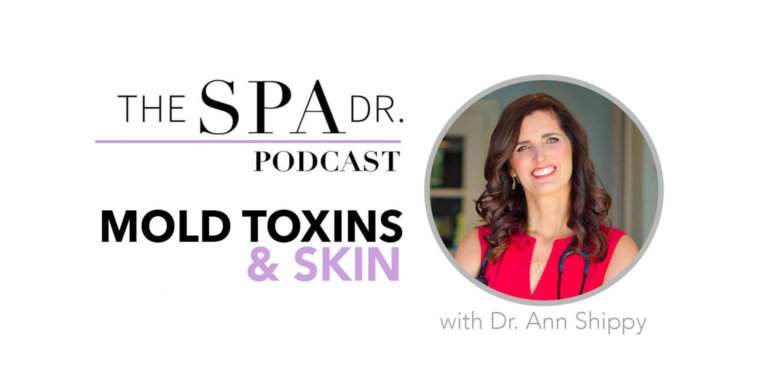

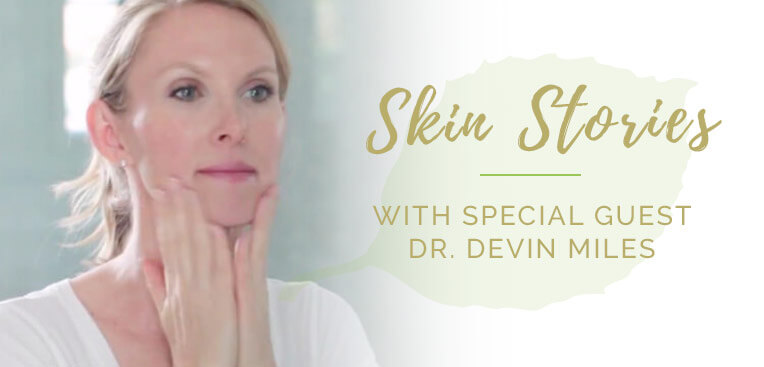
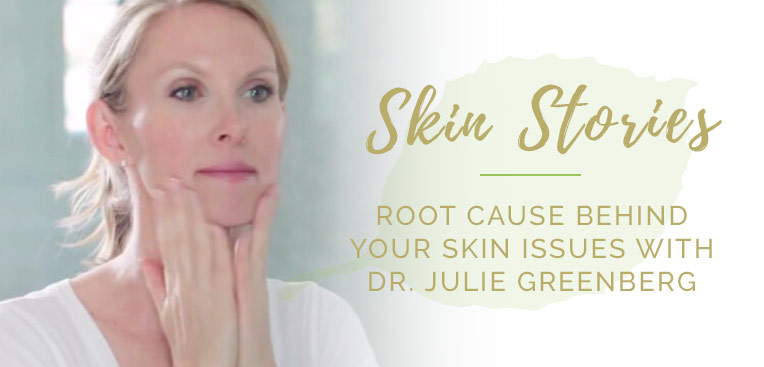

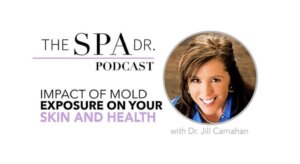
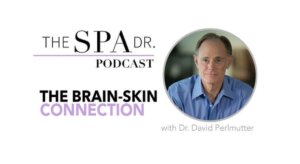
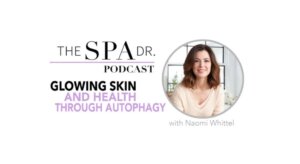
Reader Interactions